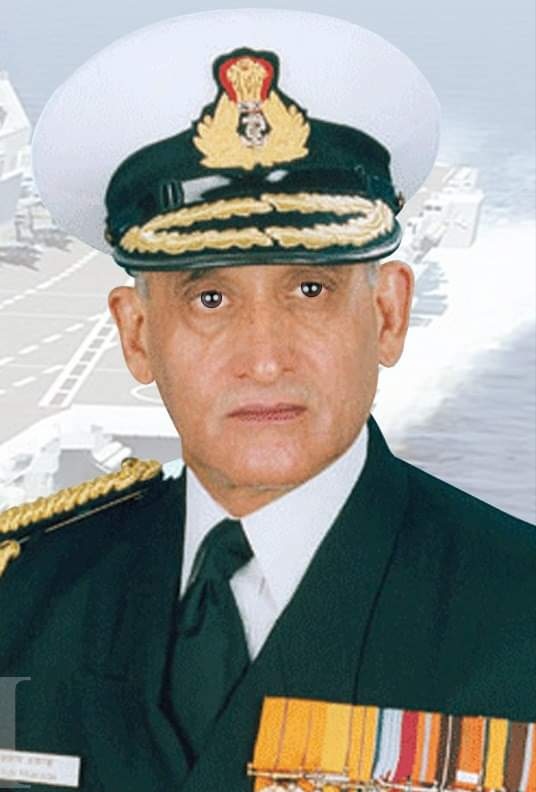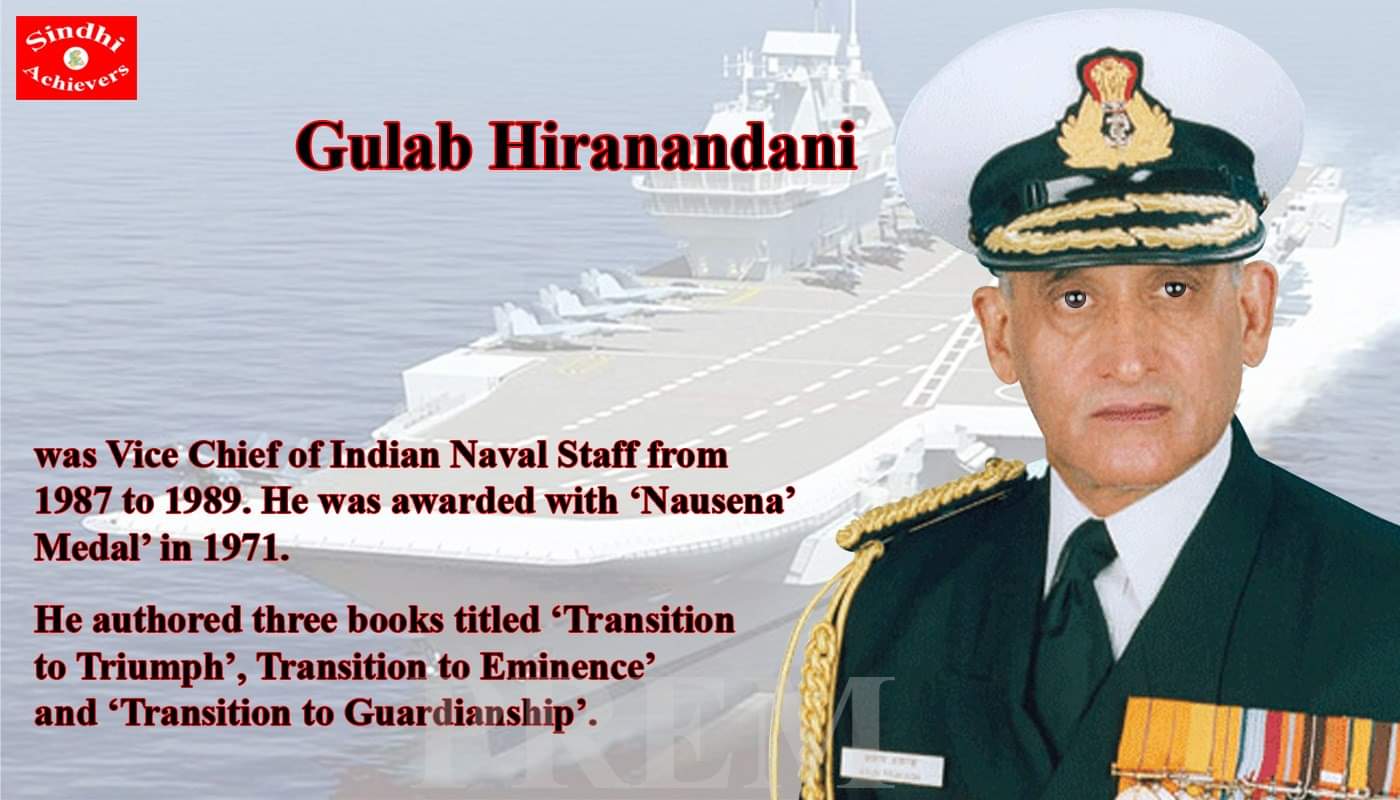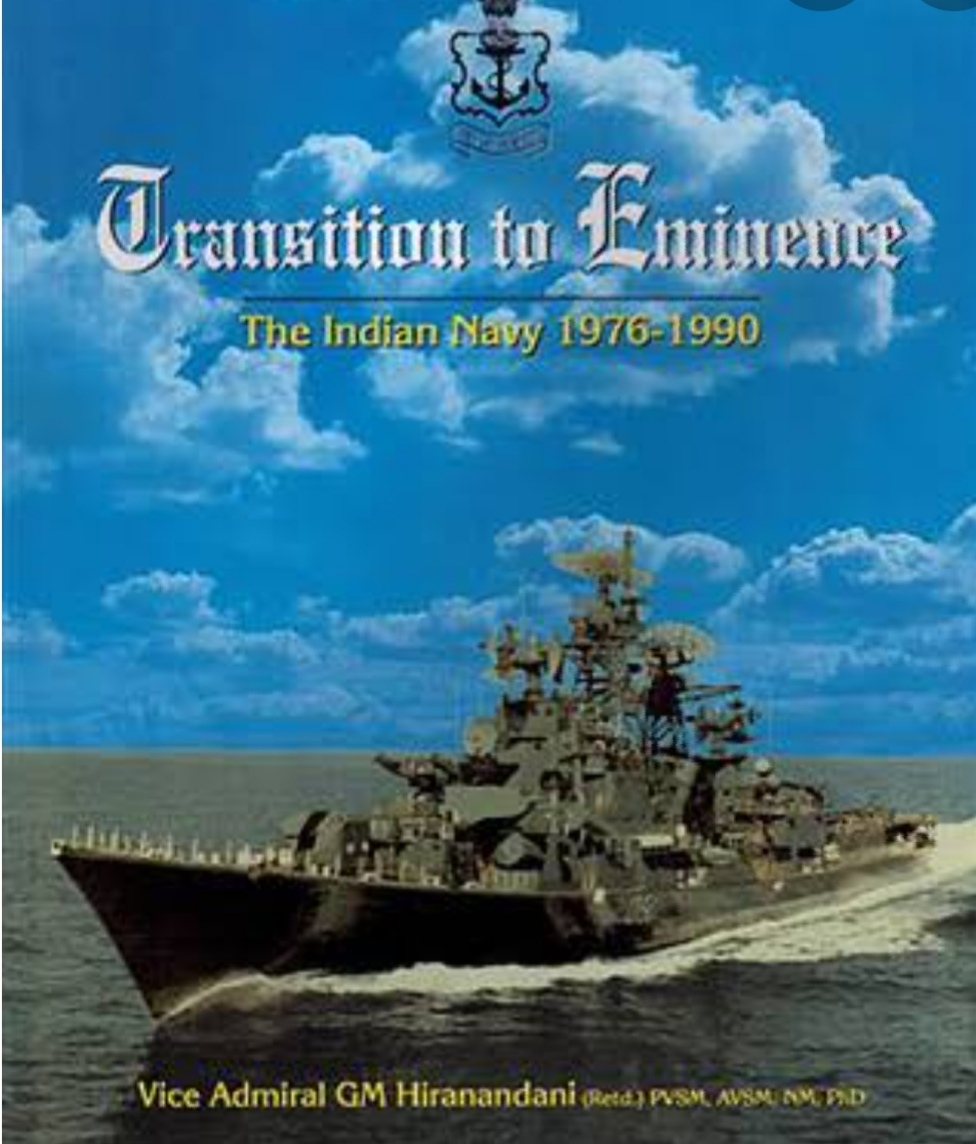

Sindhis are said to be the mentors of Indian Naval Force. Late Vice Admiral Gulab Mohanlal Hiranandani is one of those Mentors.
The number of Sindhis who joined Indian Navy may not be the large, but they rose to highest positions due to their efficiency, honesty to their profession and hard work, and gathered fame. Some of them were Admiral Radhakrishna Hariram Tahliani, the first Sindhi to become the Chief of Naval Staff of India, Vice Admiral Gulab Mohanlal Hiranandani, the Vice Chief of Indian Navy, and Rear Admiral Gulab Thadani. They were, in fact, mentors of Indian Navy. Sindh Courier recently published a detailed write-up on life and achievements of Admiral Tahliani. Today we are sharing life-sketch of Late Vice Admiral Gulab Mohanlal Hiranandani.
Here is the life sketch of Vice Admiral Gulab Mohanlal Hiranandani.
Gulab Mohanlal Hiranandani, born in Karachi on 29 June 1931, was a senior Indian Navy Officer. He was a mentor and guide to many generations of Indian Naval Officers. The Naval history cell in Naval Headquarters was a place for many young officers to seek his advice and guidance. He served India with distinction for 60 years from 1949 to 2009, working to the last day of his life as Officer on Special Duty to Naval Headquarters.
Gulab Hiranandani served as the Vice Chief of the Naval Staff from 1987 to 1989. He was awarded the Nausena Medal for gallantry during the Indo-Pakistan War of 1971.
Hiranandani is credited with the detailed planning of the Indian Naval Academy at Ezhimala and INS Kadamba in Karwar, the foundation stones for which were laid during his tenure as flag Officer Commanding in Chief Southern Naval Command. During his tenure all Naval Training was centralized under the southern Naval Command. A brilliant tactician, his work remains pivotal to Indian naval training on maneuvers and operational tactics.
He authored three landmark books on Indian naval history, Transition to Triumph, Transition to Eminence and Transition to Guardianship. These books covered the history of the Indian Navy from 1965 to 2000.

Service career
Gulab Hiranandani joined the Royal Indian Navy in 1949. He was trained with the Royal Navy, between 1949 and 1953. He underwent specialized training in Gunnery and Missiles in 1957. In 1965, he attended the Naval Staff College at Royal Naval College, Greenwich. He held a Master’s degree in Military Science and a doctorate in Political Science.
In 1961, he was appointed the Commandant of INS Dronacharya, and was promoted to commander on 30 June 1969.
During the Indo-Pakistan War of 1971, Hiranandani served as the Fleet Operations Officer of the Western Fleet. In this role, he led the detailed planning and logistics for key naval operations. He was awarded the Nau Sena Medal for his role in planning and implementing of Operation Trident and Operation Python.
Hiranandani served as the Deputy Director Weapons’ Policy and Tactics (1968-1970) where he was instrumental in the acquisition of the Missile boats used in Operation Python & operation Trident. He developed the tactics on how to deploy them in War. During his Tenure as Commanding officer (1970-1971) he developed and tested methods of towing the short range missile boats from Vizag in Bombay in heavy seas during the monsoon of 1971. These techniques were then used to tow the missile boats near Karachi harbor to be used as Missile delivery Vehicles with devastating effect. He was appointed the Director of Combat Policy and Tactics, serving from 1974 to 1977. He was a deep thinker and brilliant tactician. His work on naval strategy remains the basis for much of the tactical training and operational maneuvers of the Indian Navy. He was awarded the Ati Vishisht Seva Medal (AVSM) for this contribution. Hiranandani was promoted substantive captain on 1 January 1976. In 1980, he commissioned INS Rajput (D51), the lead vessel of the Rajput class destroyers as its first Commanding Officer.
He was appointed the Chief of Staff of the Western Naval Command in 1981, with promotion to rear admiral on 7 May 1981. Promoted Vice Admiral on 30 June 1983, he was appointed the Deputy Chief of Naval Staff the same year. During this time he laid the foundation for the Project 15 Class of Stealth Guided Missile destroyers. He worked in close co-ordination with the DRDO & Bharat Electricals to indigenously design the electronics and Missile systems required for new Warships. He was instrumental in putting together a long ship building plan which gave the Indian Navy the capability to be self-sufficient in building its own up to date warships and missiles.
In 1985, Hiranandani was appointed the Flag Officer Commanding-in-Chief of the Southern Naval Command. During his tenure in this office, he led the detailed planning for the development of the Indian Naval Academy at Ezhimala, Kerala. He was also involved in the planning of INS Kadamba in Karwar, Karnataka. He was instrumental in persuading the Chief Ministers of Kerala and Karnataka to transfer the land for these massive projects to the navy. He was awarded the Param Vishisht Seva Medal for these contributions.
Hiranandani retired from active service in the Indian Navy in 1989.
After retirement from the Navy, Hiranandani served as a member of the Union Public Service Commission for six years between 1989 and 1995. He retired as the commission’s Acting Chairman.
In 1995, he was appointed the Official Historian of the Indian Navy. He authored a trilogy on the history of the Indian Navy. Transition to Triumph covering the period between 1965 and 1975 was published in 1999. Transition to Eminence captures naval history between 1976 and 1990 was published in 2004. Transition to Guardianship covers the history of the navy between 1991 and 2000 and was completed just few hours before his death on September 2009. It was released on Navy Day, 4 December 2009.
Hiranandani also wrote a number of analytical reports on a maritime security and strategic issues.
The contemporary history of the Indian Navy, he authored, is unique as by providing a detailed account on Naval history in the 20th century it allows Naval officers to learn about naval history and perhaps help them to learn from this and prevent mistakes. One of Admiral Hiranandanis’ favorite sayings was, “Those who fail to learn from the lessons of history are condemned to repeat them” His aim in writing the History of the Indian Navy was to leave behind a document for later generations of Naval Officers to learn from the mistakes of the past.

Following his death, Indian Navy instituted a ‘Vice Admiral GM Hiranandani Rolling Trophy’ and the first ever trophy was received by Lieutenant Commander Abhishek Yadav from Smt. Susheel Hiranandani, the spouse of Admiral Hiranandani on 26 Apr 13 at a function held at the Maritime Warfare Centre at the Naval Base Kochi.
Personal life
Hiranandani was married to Susheel Hiranandani. His son is a physician and his daughter, Late Meera Sanyal was a banker and civil society activist. His final years were spent at Malakkara near Chengannur in Kerala with his son Dr. Manik Hiranandani.
_______________________
